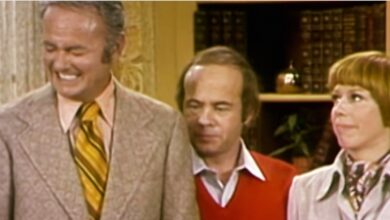Paul Revere & the Raiders’ “Indian Reservation” – A Powerful and Haunting Tribute to Strength and Survival
Few songs in the American rock canon echo the sociopolitical pulse of their time as powerfully as Paul Revere & the Raiders’ 1971 single, “Indian Reservation (The Lament of the Cherokee Reservation Indian).” It wasn’t just a commercial triumph—it was a searing commentary on the historical mistreatment of Native Americans. As much as it elevated the band’s profile, it also struck a national chord with its mix of activism, sorrow, and soaring melody.
Originating from Boise, Idaho in 1958, Paul Revere & the Raiders carved their identity with patriotic garb and rebellious spirit. Fronted by the exuberant Paul Revere on keyboards and the charismatic Mark Lindsay on vocals, the group rose to prominence in the 1960s. Hits like “Kicks” and “Hungry” showcased their distinctive garage-pop fusion and made them a fixture on youth-centric television programs like “Where the Action Is,” hosted by Dick Clark.
As the decade shifted into the 1970s, the Raiders faced a changing musical climate. During this transition, Mark Lindsay encountered “Indian Reservation,” a haunting track by songwriter John D. Loudermilk. The song had been recorded by Don Fardon in 1968 but hadn’t reached its full potential. Lindsay, drawn to its message, decided to produce a new version using the legendary Wrecking Crew session musicians, recording it on December 3, 1970.
There was initial hesitation about how the song should be presented. Though Lindsay had considered releasing it as a solo effort, he and the management team ultimately chose to issue it under the Raiders’ name. That gamble paid off. “Indian Reservation” quickly gained momentum and claimed the top spot on the Billboard Hot 100 on July 24, 1971. It became the group’s first and only number-one hit, etching its place into the cultural narrative of the time.
The lyrics of the track are a mournful account of the Cherokee people’s forced displacement and struggle to maintain their heritage. Phrases like “Cherokee people, Cherokee tribe, so proud to live, so proud to die” capture both the pride and the heartbreak of a people whose story is too often overlooked. The song’s melancholic arrangement, highlighted by its minor chords and steady rhythm, intensified the song’s somber atmosphere, making it a compelling protest wrapped in melody.
Beyond its emotional weight, “Indian Reservation” became a commercial phenomenon. It would go on to become Columbia Records’ highest-selling single for nearly ten years, moving more than six million copies. The album of the same name reached number 19 on the Billboard 200, marking a significant resurgence for the band. For a group that had dominated much of the previous decade, it was a powerful reminder of their enduring relevance.
Yet the song’s towering success cast a long shadow. While it opened new doors for the Raiders, it also placed them in a narrow artistic lane. Later releases failed to capture the same lightning, and the band’s popularity gradually declined. By 1975, with tensions rising and commercial results dwindling, Paul Revere & the Raiders quietly disbanded, bringing a close to a chapter that had redefined their legacy.
Still, the message of “Indian Reservation” outlived the band’s chart reign. The song became a symbol of awakening during a time when America was beginning to face its history more critically. Its spotlight on Native American struggles helped generate broader conversations in mainstream media, and over the years, other artists have covered it, using their voices to echo the same call for awareness and justice.
As a piece of cultural commentary, “Indian Reservation” demonstrates how music can transcend entertainment. At a moment in history when protest songs were gaining traction, the Raiders contributed a narrative that blended heartbreak, resistance, and pride. It proved that a pop song could carry a message as weighty as any speech or documentary, inviting listeners to engage with America’s complex past.
Within Paul Revere & the Raiders’ catalog, the song remains a defining achievement. It showed their ability to pivot creatively and engage with pressing themes, even as it underscored the volatility of fame. Their willingness to take a bold, serious turn with “Indian Reservation” is a major reason the track has endured through the decades as more than just a hit—it’s a statement.
Over fifty years later, the song’s relevance is undiminished. The injustices and resilience it describes are still present in the ongoing dialogue about indigenous communities and cultural preservation. The refrain, once a radio staple, now echoes as both a memorial and a call for recognition, urging generations to remember, reflect, and strive for better.
“Indian Reservation” is more than a highlight in Paul Revere & the Raiders’ discography—it’s a meaningful artifact of American music. Its emotional weight, historical focus, and continued resonance prove that the right song, at the right time, can become a lasting voice for those too long ignored. It continues to inspire not only as a musical success but as a profound reminder of the stories music is meant to tell.





